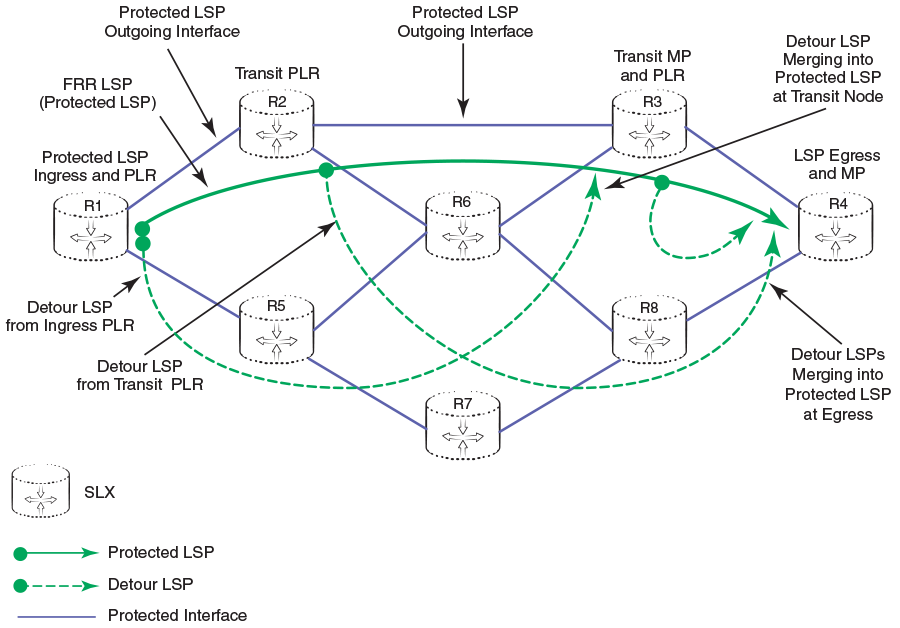MPLS Facility Backup FRR
MPLS facility backup Fast Reroute (FRR) is a protection mechanism to provide fast traffic recovery, upon link or router failures. FRR LSP is also known as the protected LSP. RFC 4090 defines the FRR protection mechanism.
The FRR protection mechanism sets up detour LSPs along every node of the protected LSP so that the detour LSP carries the traffic whenever there is a failure along the outgoing interface of the protected LSP or whenever there is a failure in the downstream node of the LSP.
The Point of Local Repair (PLR) is the node of the protected LSP at which the detour LSP is set up, and the Merge Point (MP) is the node where the detour LSP merges into the protected LSP.

A detour LSP at a PLR must avoid the outgoing interface of the protected LSP and merge back into any of the downstream nodes of the protected LSP. The detour must avoid any of the downstream-facing links of the protected LSP from Ingress to the PLR, avoid any nodes between the PLR and the MP, and avoid any nodes between the MP and the egress of the protected LSP.
When the detour LSP merges into the immediate downstream node of the protected LSP, it is called a link protection detour LSP. A detour LSP merges into the protected LSP at any downstream node other. The immediate downstream node is called a node protection detour LSP. A link protection detour LSP provides protection only against link failure, whereas a node protection detour LSP provides protection against link failures as well as downstream node failures.
At a PLR node, the detour LSP merging-in node or Merge Point (MP) node is chosen in the order of next-hop (NH),next-next-hop (NNHOP), next-next-next-hop (NNNHOP) and so on. This order is the default order, and explores node protection first with NNHOP MP node protection. If NNHOP MP node protection is not possible, then link protection is tried with NH as MP. If the link protection is also not possible, then NNNHOP node protection options are explored.

